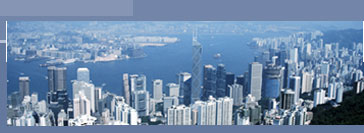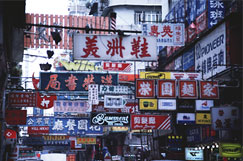 |
 |
 |
 |
| Home > Market Overview | |
 |
Market Overview Absent any significant catalyst, overall U.S containerized exports to Asia are expected to show steady, modest gains through 2012-13, in the 5-6% range in the face of uncertain demand and conflicting market dynamics. A weak dollar and weak domestic demand since 2009 have generally encouraged exports. But demand in the various market segments - agriculture, industrial inputs, intercompany trade, manufactured goods - have experienced different trends. As America and Europe have scaled back imports from Asia, for example, Asian economies have turned inward and shifted their focus toward domestic consumption and intra-Asia trade. That in turn interrrupts the virtuous cycle in which the U.S. sells Asia raw commodities that are shipped back as finished goods (wastepaper for packaging, cotton for apparel, plastic resins and metal scrap for manufacturing, hides for leather furniture and car seats). To the extent Asian economies slow down, an emerging middle class buys fewer imported specialty food products. At the same time, U.S. fast food outlets continue to grow in Asia, often importing their basic food inputs - meat, frozen potatoes, dairy products, soda - to maintain consistent product quality. Sourcing of raw commodities has gotten increasingly global and remains highly price competitive. Here global exchange rates, crop conditions and bulk charter prices versus container rates all drive trade patterns. U.S. exports of feed grains, cotton and meat are all expected to do well in 2012, particularly as the Korea Free Trade Agreement is implemented. Increased consumer spending in the U.S. suggests an upturn for Asian manufacturing and, with it, renewed demand for raw materials and semi-finished inputs. One possible setback to that scenario could come if a sustained weak dollar, higher Asian factory wages, eventual untaxed repatriation of foreign earnings and job-creation incentives again interrupt the cycle. For the moment, however, a steady recovery of jobs and consumer demand in the U.S., along with continued retail foreign investment in Asia, is expected to translate into a slow, steady rise in U.S.-Asia container cargo in the coming year. Space and Equipment Vessel space availabiity is unlikely to pose problems for westbound transpacific shippers in 2012. Two-way ship capacity in the trade is still driven by the eastbound leg, where the ratio of loaded containers moving is currently about 2.2-to-1 relative to westbound. With U.S. export growth forecast to exceed import growth in 2012, that ratio should begin to narrow, but not beyond the 1.8-to-1 low seen in 2010. Some routes have seen consolidation of service strings, but added ships due to slow-steaming - and larger ships due to cascading of vessels from other trades into the Pacific - have added slots and cutoff time options in many cases. Westbound capacity is still limited by cargo weight, repositioning of empty containers, a mix of equipment sizes and other operational factors. Container shortages have eased during 2011, as production in China and elsewhere in Asia has ramped back up. But here, too, eastbound transpacific and Asia-Europe demand drive manufacturing, with a focus on high-cube 40-foot, 45-foot and 53-foot equipment geared more to the eastbound market and less practical in handling heavier westbound cargoes. Demand continues to outpace supply of costly refrigerated equipment across carriers' global networks; this creates upward rate pressure in the westbound transpacific, where refrigerated is largely a one-way trade, with most refrigerated capacity carrying dry cargo at a discount on the eastbound return to the U.S. Compounding the problem going into 2012, various carriers have had to segregate, inspect and repair refrigerated several hundred containers serviced in Vietnam with a defective, combustible refrigerant. This process has removed already scarce equipment from operation. Costs Keep Rising Crude oil prices topped $100 a barrel at the beginning of 2012, and tight refinery capacity pushed marine bunker fuel prices up past $700 per metric ton, approaching the highs seen in mid-2008. By contrast, bunker prices were around $474 per ton in Q1 2010 and $260 in Q1 2009. |
|
||
|
||||
|
Inland transport is a major cost concern in 2012. Railroads are seeing strong demand across all of their commodity lines, including intermodal. They remain under pressure to expand and build redundancy into their networks, and they exert considerable pricing power in the market. The trucking sector, meanwhile, is in a costly vehicle replacement cycle to meet enviromental rules and is experiencing a driver shortage and increased driver costs, both for retention and to meet new hours of service requirements. Higher rail and trucking rates create a serious equipment management challenge for shippers and carriers in the westbound trade. Inbound containers from Asia are typically dropped and unloaded near major retail centers. Most westbound return loads, however, originate in outlying industrial areas and agricultural distribution points. Getting containers from points of discharge to westbound loading locations often involves a rail or truck move of hundreds of miles. Neither shippers nor carriers are willing or able to absorb the full cost, and neither rail nor truck carriers are willing or able to offer reduced empty repositioning rates. Ocean carriers, meanwhile, have adopted transloading and other strategies to keep ocean containers closer to ports, transferring cargo to domestic containers at distribution facilities near the port for the inland move. This adds to the inland scarcity of marine equipment. Carriers and shippers continue to explore a range of solutions to the equipment availability dilemma, such as use of rail cars or carrier-owned equipment to get cargo to Chicago, Southern California and other areas where marine containers accumulate. These also involve increased handoffs of equipment and cargo handling, leading to higher costs for the shipper, carrier or both. Best Practices Operational difficulties experienced by shippers and carriers in early 2010, involving bookings, documentation and cutoff times, have eased, but not completely solved. Online 'shipment visibility' remains a goal, but outdated EDI systems and incompatible third-party and internal software have led to increased verification call volume to carrier customer service call centers. 'Falldown' and 'phantom bookings' - a self-perpetuating cycle of shippers making multiple bookings to ensure they get equipment when they need it, and carriers overbooking to ensure they don't turn down actual cargo for a nonexistent booking - are fewer, have not gone away. The problem is likely to solve itself in the long run as shippers and carriers build equipment assurances and performance penalties into their contracts. Advanced cutoff times and documentation requirements, in part to comply with U.S. government security requirements, remains a contentious problem - particularly for agricultural exporters who rely on a very short timeframe for picking crops, packing and loading aboard ship. Longer documentation lead times often require documents to be filed before crops are picked. WTSA lines and shippers began meeting in 2009 to address these and other problems in a conversation about best practices in their service contracting. The conversation was formalized in 2010 with creation of a WTSA Shipper-Carrier Advisory Board. In addition, WTSA has been working with the U.S. Department of Agriculture to provide updated, carrier-specific container availabillity data to agriculture shippers. Another program, in cooperation with the Federal Maritime Commission, offers a rapid response mechanism to address shipper-carrier service issues. Rates Uncertain market demand as China's economy has slowed, as U.S. imports have posted only modest growth, and as emerging markets in Asia have focused their trade to a greater degree within Asia, contributed to westbound rate erosion during 2011. Headhaul Asia-U.S. rates, unlike in the past, remained highly competitive and were in no position to offset westbound losses. Transpacific carriers, under significant rate pressure in both directions, are estimated to have sustained as much as $800 million in cumulative losses in 2011, according to industry analyst Alphaliner. WTSA carriers conducted a full review of their moving rates and contracts in late 2011, and initiated an initial round of commodity-specific rate increases over first quarter 2012. The aim is to reverse previous losses and restore rates to levels that maintain baseline service levels and allow for future reinvestment as demand picks up. |
 |
|||
